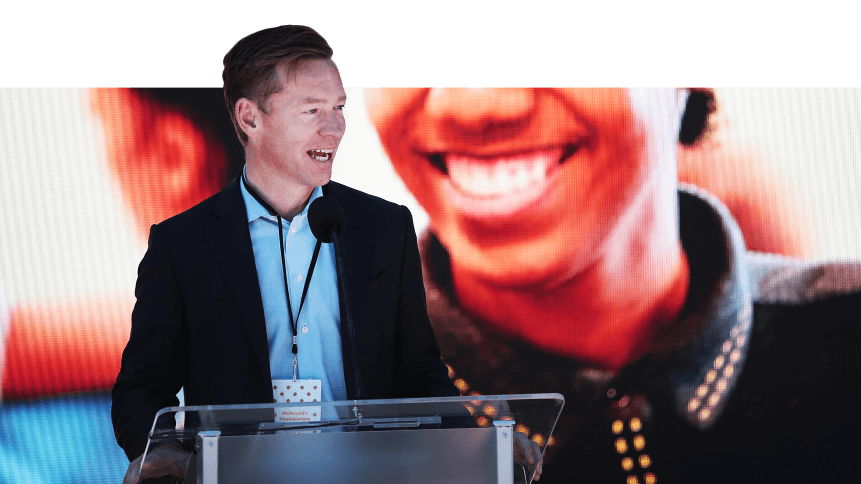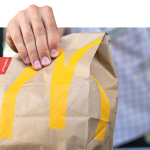Will new leadership curb McDonald’s digital momentum?

Success in the fast-food business hinges on convenience, efficiency and customer experience.
That’s the same in most other industries, of course, and like other industries, fast-food businesses face a constant struggle to ensure they’re hitting those ever-rising benchmarks out of the park.
With 37,000 restaurants across more than 115 countries, a workforce of more than 200,000 and a current value of US$159 billion, no company in the sector is more capable of doing that than McDonald’s.
Those figures put it head and shoulders above competitors, and they are owed to its affordable food and lightning-fast service.
In the last decade, the firm has been at the forefront of technology integration backed by a batch of strategic acquisitions and the business nouse to deploy newly-acquired tech quickly and effectively, and at scale.

McDonald’s stands well ahead of fast-food competitors. Source: Statista
Leading the charge since 2015, much of the firm’s recent success has been down to former President and CEO Steve Easterbrook under whose leadership the company slashed expenses by US$500 million per year and reduced the average customer wait time by 20 seconds.
Launching the firm’s Velocity Growth Plan in March 2017, Easterbrook made technology, delivery, and Experience of the Future (EOTF) the three central pillars of the business’s global strategy.
The decisive direction saw the launch of a global mobile app, and self-order kiosks and digital menu boards now present in most restaurants. It also led the company to its biggest acquisition in 20 years with the US$300 million buy-out of personalization and decision logic company Dynamic Yield last year.
The ‘suggestive sell’ technology now enables McDonald’s to provide customers with an ‘Amazon-like’ recommendation experience at the Drive-thru menu board. It presents customers with food and drink options based on time of day, weather, current restaurant traffic, and trending menu items, and is now running in more than 11,000 drive-thrus, resulting in tangible increases in the average check.
Investing in technology — or investing in tools that ramp up convenience and enhance the customer experience — is crucial for the fast-food sector’s survival in a sector ripe for disruption by well-backed, tech-savvy app-based delivery startups.
Taking Easterbrook’s torch
Easterbrook’s ‘shock departure’ from the firm at the end of last year unearthed controversy surrounding the household brand’s ‘toxic’ workplace culture and accusations of sexual harassment.
While his approach to leadership has drawn controversy, few could deny the positive business impact he has left behind, including revitalized menus, better ingredients, and expanded delivery and mobile payment options.
YOU MIGHT LIKE

Why Deliveroo is advancing its payment tech
Now — with the pressure laid on more than ever to keep innovating — the firm’s new leader, Chris Kempczinski, carries the task of keeping Easterbrook’s digital torch alight. According to statements from McDonald’s 2019 Q4 earnings call, his ambitions are far from meek and his awareness of the challenge ahead very real.
While he acknowledged McDonald’s has entered 2020 in a “position of strength” he was clear that the same momentum must carry over for continued success in an increasingly competitive environment and changing consumer tastes.
“We’ve been on an ambitious journey in the last few years, from turnaround to transformation. And through it all, we’ve made a path forward even as the landscape changes,” Kempczinski said.
“With these changes, customer expectations evolve, placing new demands on the world’s leading brands. We’re ready for that challenge, embracing it across our business with the enduring strength and values that make McDonald’s a force for positive social and economic development in every community we serve.”
Reflecting on Easterbrook’s legacy, Kempczinski said there was “a realization that we can and will do more to deliver better taste, greater value and enhanced convenience for our customers.”
This will come down to continued modernization of its stores which are on track to be completed by the end of 2020, while it will continue to leverage “the most relevant” technology, focused on giving customers simpler, smoother and more personal engagement with McDonald’s.
That involves the creation of a new digital customer engagement team responsible for developing new industry-leading digital experiences for customers to accelerate customer-focused digital initiatives, including ordering, personalization, payments, loyalty, and delivery platforms.
“There’s no question that digital is transforming global retail. Across the system, there is great excitement about the role it will play in transforming McDonald’s by strengthening and deepening relationships with our customers,” Kempczinski said.
“So we know there’s great potential with digital, but there’s also a lot of hard work to do to realize our ambitions.”









